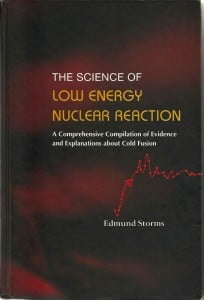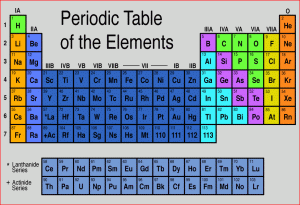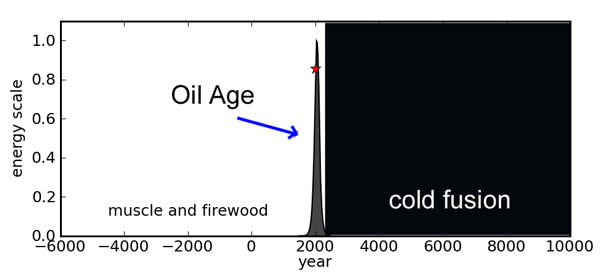by Edmund Storms
An ordinary person might wonder why cold fusion is not being explored more vigorously as the ideal energy source it promises to be. Why do public figures avoid discussing the idea and why do uninformed writers occasionally use cold fusion as an example of bad science?
Twenty-one years ago when Profs. Fleischmann and Pons (Univ. of Utah) announced the discovery, skeptical attitudes were justified and widespread. The claims were and still are completely at odds with what is known about nuclear reactions. The idea that energy could be produced by fusing two deuterons in what looked like a Mason jar was crazy at the time and still is hard to understand.
 But now the situation has greatly changed. Hundreds of people in over 12 countries have been investigating the process with growing success. Thousands of papers have been published and are easily available for study at www.LENR.org and evaluated in the book “The Science of Low Energy Nuclear Reaction” available from Amazon.com.
But now the situation has greatly changed. Hundreds of people in over 12 countries have been investigating the process with growing success. Thousands of papers have been published and are easily available for study at www.LENR.org and evaluated in the book “The Science of Low Energy Nuclear Reaction” available from Amazon.com.
Clearly, a new phenomenon has been discovered even though it has not been fully explained nor is easy to produce.
Yet, the attitude toward the subject in the popular press and conventional science has hardly changed. Why has a change not occurred especially in view of the growing need for a non-carbon and a non-uranium based energy source? Indeed, the long running reluctance to accept cold fusion in the face of mounting evidence is unique to modern science, which has delayed accepting many new ideas, but never with as much determination.
The claim started with several strikes against it. First and most important, the claim was not easy to replicate. Most efforts, but not all, failed mainly because many people had a very poor understanding of what was required. They also expected the effect would be large and easy to detect once it was produced. Instead, the effect is difficult to produce even today and the results can be ignored as being caused by imagined prosaic processes.
Frequently, these imagined processes require as much suspension of rational understanding as skeptics claim is being used to support cold fusion its self. In other words, each side in the debate has to make equally improbable claims, but with the claims made for the effect being supported by a growing collection of experimental evidence.
Second, the claim was and is in conflict with what is known about nuclear interaction, causing many high profile scientists to conclude the effect is impossible.
Third, if the effect turned out to be real, it would put the hot fusion program out of business. Billions of dollars have been spent on this effort over 60 years in an attempt to cause a similar kind of reaction to that produced by cold fusion, but with disappointing results. The physics professors at major universities funded by this program did not appreciate the possibility their careers might end because of an idea suggested by a couple of chemists.
Gradually, a myth was formed around cold fusion by the skeptics until it became the popular metaphor for bad science done by deluded scientists. Whenever a writer wanted to show how scientists can be deceived, cold fusion was combined with poly-water and n-rays as an example of how someone can be mislead if they are not careful and not skeptical enough, or not as skeptical as the writer. Once such a myth forms in popular journalism, it is very difficult to change, especially when the myth has a benefit to influential groups.
Modern society is filled with such myths, some of which are harmless but some will have devastating consequences if they are not changed. One such myth is that the earth is not getting warmer and that sea level will not rise as ice continues to melt. Efforts to cut back on the generation of CO2, the main cause of warming, are met with the same emotional rejection as is applied to cold fusion. In this respect, the myth of cold fusion and the myth of non-global warming have a lot in common. Rejection of global warming leads to the destruction of civilization while rejection of cold fusion eliminates a possible solution to this disaster.
Sooner or later scientists in some country will discover how to make cold fusion work on a commercial scale. When this happens, the countries that develop this technology will rapidly become richer and more powerful. The cost of energy for manufacturing will go down and processes that are not yet practical under most conditions, such as obtaining fresh water from the sea, will become widely used.
These benefits will cause a rapid expansion in the power and influence of the countries using this inexpensive energy source. What about the countries that do not know how to make the effect work?
Their scientists will attempt to reverse engineer the power generator, but in this field, such efforts will be difficult without an understanding of how the process works, an understanding that will not be shared by the discovers.
Also, highly developed countries will have difficulty removing their present energy infrastructure and substituting this much simpler source. So, the race is on and the potential winners are not obvious.
Nevertheless, it is obvious the winner will not be a country that ignores and rejects the reality of cold fusion.





